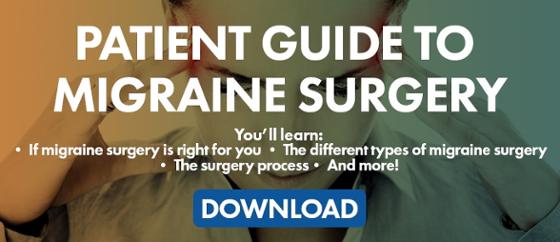If anyone was ever in any doubt regarding the severity of migraine, they need only be pointed to a report produced by the World Health Organization (WHO). The report indicates that chronic daily headache (CDH), of which migraine is one type, is as disabling to sufferers as psychosis, quadriplegia, or dementia. Many sufferers find their migraines are controllable through conventional pain medications, but for a significant minority such treatments have little to no effect.
For those people, developing approaches, which include neurostimulation therapies, and which focus on the central nervous system or peripheral targets, offer possible relief.
One such therapy for the treatment of primary or migraine headaches is occipital nerve stimulation (ONS).
What Is the Occipital Nerve?
As part of the peripheral nervous system, the two occipital nerves run from the spine in the upper neck, through the muscles on the back of the head and over the scalp. They can extend almost to the forehead but not across the face or ears. When irritation occurs anywhere along the occipital nerves the result can be shooting or tingling pain, often located on one side of the head or focused towards one eye. It can also cause extreme sensitivity in the scalp, making the lightest touch very painful. Everyday actions, such as shampooing the hair or even lying on a pillow, cause pain.
Occipital Nerve Stimulation For Migraine
Although still developing, occipital nerve stimulation has been used for the treatment of headaches for several decades, and there are varying surgical procedures. Implants that deliver electrical stimulation to nerves and suppress pain dates back to 1962. However, it wasn't until the late 1980s that surgical procedures to carry out treatments on patients with occipital neuralgia were established.
Much later, in 2003, it was suggested that similar treatments could be used to treat chronic migraine. Since then, many developments and controlled trials have demonstrated how effective this treatment is among some migraine sufferers.
Qualifying Criteria
Not everyone is a candidate for occipital nerve stimulation. In order to be considered you need a diagnosis of chronic, intractable, migraine. In order to be defined as intractable, three or more preventive drugs must have failed to bring relief, and the condition must have the following characteristics:
- Three months or more of suffering at least 15 headache days every month. Each headache should last between 4 and 72 hours.
- The headaches must not be caused by any other disorder.
- The headaches should cause moderate to severe pain and be aggravated by normal physical activity. The pain location should be unilateral, and may have a pulsing quality. At least two of these defining pain conditions should be present in order for the sufferer to be considered for occipital nerve stimulation treatment.
The Procedure
The occipital nerves are stimulated by mild electrical impulses delivered via small electrodes inserted under the skin. Before surgery, patients undergo psychological assessments to determine their suitability and make sure they understand the risks. There are always risks with any surgical procedure and some of the risks associated with this one include:
- Nerve damage
- Fracture of the leads
- Battery failure
- Infection
- Painful muscle stimulation
In addition, there is also the risk that the procedure will prove ineffective.
Before permanent leads and electrodes are implanted there is normally a trial placement with temporary leads inserted under local anesthetic in the back of the neck. During this temporary insertion, and in order to find the correct location, electrical impulses are sent through the lead until the patient feels a sensation of pins and needles. Surgeons rely on the patient reporting what they are feeling, which is why the initial, temporary implants are performed under local anesthetic.
Once the correct position is achieved, the trial leads may be left in place for around a week in order to assess their effectiveness. Following this trial period, permanent implants are inserted under general anesthetic.
Once permanent implants are in place, the patient is able to control the electrical impulses via an implantable pulse generator (IPG). The battery powered IPG can be sited in various regions of the body, including the lower abdomen, buttocks, beneath the shoulder blades or in the chest below the clavicle. Batteries are either rechargeable or not, with rechargeable ones lasting longer and having a lifespan of around 10 years. Patients can turn the device on and off, effectively controlling the stimulation they receive.
New developments in miniaturization have introduced small self-contained devices that don’t need leads to external power sources. These reduce some of the risks, such as the possibility of the implanted leads migrating.
In trials to assess the effectiveness, 80% of patients reported a reduction in severity or frequency of at least 50%, with a corresponding reduction in their need for other medications.

